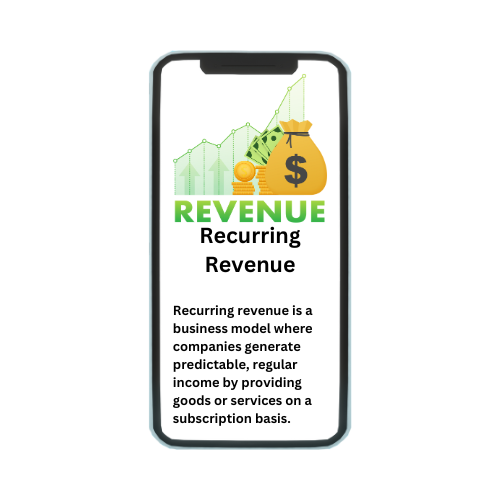Buy the Dips is a trading strategy that involves purchasing an asset or security when its price has temporarily declined, under the belief that the price will recover and rise over time. Traders and investors using this strategy aim to capitalize on short-term price drops within an overall upward trend, taking advantage of market corrections or temporary downturns.
The logic behind buying the dips is that the price drop offers an opportunity to enter the market at a discounted price. It’s often based on the assumption that the market or asset has strong fundamentals and the decline is temporary, rather than a sign of a larger downward trend.
What is ‘Buy the Dips’?
Before diving deeper into the topic, let’s define what buying the dips means. Buy the dips refers to purchasing stocks, cryptocurrencies, or other assets when their prices experience a temporary decline or a “dip” in the market. This strategy aims to capitalize on the market’s tendency to rebound after a downturn, allowing investors to buy assets at a lower price before their value rises again.
Understanding Buy the Dips
To grasp the concept better, let’s visualize it with an example. Imagine you are tracking the stock prices of a particular company, and suddenly, the stock experiences a sharp drop in value due to a market correction or an adverse news event. Instead of panicking and selling your holdings, a buy-the-dips strategy encourages you to view this as an opportunity to purchase more shares at a lower price. The rationale behind this approach is that markets often recover from short-term setbacks, allowing investors to profit from their patience and long-term perspective.
Benefits of Buying the Dip
Buying the dip offers several potential benefits for investors. Here are three key advantages of this strategy:
- Lower Average Cost: By purchasing assets during market downturns, investors can acquire them at a lower average cost than peak prices. This could increase their overall returns when the market rebounds.
- Opportunity for Capital Appreciation: If an investor buys the dip and the market recovers, the value of their assets can appreciate significantly. This appreciation can generate substantial profits over time.
- Increased Portfolio Resilience: Incorporating the buy-the-dips strategy in your investment approach can help diversify your portfolio and make it sturdier to market volatility. By buying assets at different price points, you can reduce the impact of short-term market fluctuations on your overall portfolio’s performance.
To illustrate the benefits, let’s consider a hypothetical scenario. Imagine you purchased company shares during a market dip, and over time, the stock price doubles due to a market rally. Buying the dip maximizes your potential profits and decreases the risk associated with buying at higher prices.
How to Buy the Dip
Buying the dip involves a straightforward process. Here are a few steps to follow:
- Research and Analysis: Identify the assets you are interested in and conduct thorough research to understand their historical performance, market trends, and potential prospects.
- Set Target Prices: Determine the price levels at which you would consider buying the assets. These prices should be lower than the current market price and align with your risk tolerance and investment goals.
- Monitor the Market: Keep a close eye on the market and track the price movements of your target assets. Look for opportunities when prices decline significantly but are likely to recover.
- Execute the Purchase: When the asset’s price reaches your target buy-in level, execute the purchase through your preferred investment platform or brokerage account.
- Stay informed: Continuously monitor the market and update yourself on any news or developments that could impact your investment. This will help you make informed decisions and adjust your strategy accordingly.
Buying the Dip vs. Dollar-Cost Averaging
While buying the dip can be an effective investment strategy, it is essential to understand its critical differences from dollar-cost averaging. Dollar-cost averaging involves investing a fixed amount at regular time periods, regardless of the asset’s price. On the other hand, buying the dip focuses on capitalizing on market downturns to acquire lower-priced assets.
Both approaches have their merits and depend on individual preferences and investment goals. Dollar-cost averaging helps smooth out the impact of market volatility over time, while buying the dip can lead to higher returns if timed correctly. It’s essential to assess your risk tolerance and investment horizon when deciding which strategy aligns better with your needs.
Managing Risk When You Buy the Dip
While buying the dip can present lucrative opportunities, it also has risks. Here are some techniques to manage risk when implementing this strategy:
- Set Stop-Loss Orders: Consider setting stop-loss orders to limit potential losses if the asset’s price declines beyond a certain threshold. This can help protect your capital and prevent significant portfolio erosion.
- Diversify Your Investments: Avoid putting all your eggs in one basket. Diversify your investments across different industries, asset classes, and geographies to spread the risk and reduce exposure to any single investment.
- Stay informed and analyze: Continuously educate yourself about the assets you invest in and keep up with market news and developments. Analyze the fundamental and technical aspects of the asset to make well-informed decisions.
Things to consider when buying the dip.
When implementing the buy-the-dips strategy, there are a few essential considerations to keep in mind:
- Long-Term Perspective: Buying the dip is a long-term strategy that requires patience and a focus on the future potential of the asset. Focus on the investment’s fundamentals and underlying value instead of letting short-term market fluctuations influence you.
- Risk Appetite: Understand your risk tolerance and ensure that buying the dip aligns with your investment goals and financial situation. It’s important to invest within your comfort zone and not expose yourself to undue risk.
- Timing and Market Sentiment: Timing the market is challenging, and predicting a market cycle’s exact bottom or peak is impossible. Consider the broader market sentiment and avoid making impulsive decisions based on short-term fluctuations.
Taking Lessons from History
History has shown that markets are cyclical, with periods of growth and contraction. Investors can understand how different assets behave during market downturns and recoveries by studying past market cycles and historical data. This knowledge can help inform their buy-the-dips strategy and enhance their decision-making process.
It’s important to note that historical performance is not indicative of future results, and thorough analysis is crucial to making informed investment decisions.
Conclusion
In conclusion, buying the dips is a strategy that can enhance investment returns by taking advantage of market downturns. By understanding the concept, benefits, and techniques to manage risk, investors can implement this strategy effectively. However, conducting thorough research is essential, as staying informed and aligning the strategy with individual risk tolerance and investment goals.
By incorporating the buy-the-dips approach into your investment toolbox, you can position yourself to make informed decisions and potentially increase your long-term investment success.







